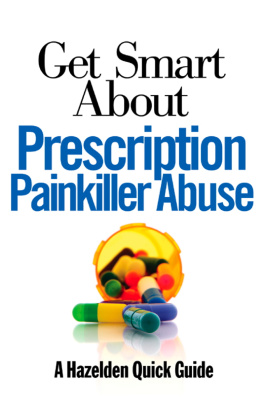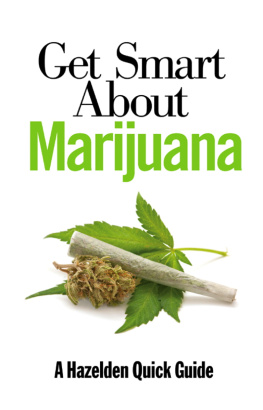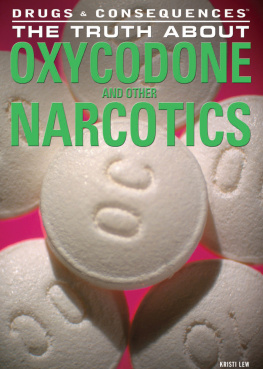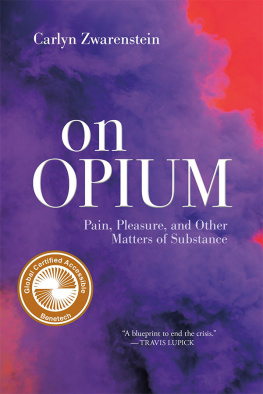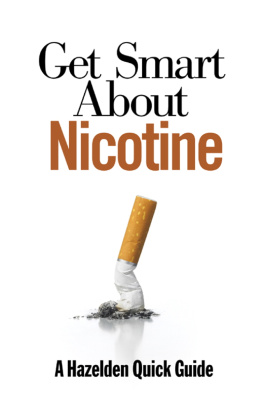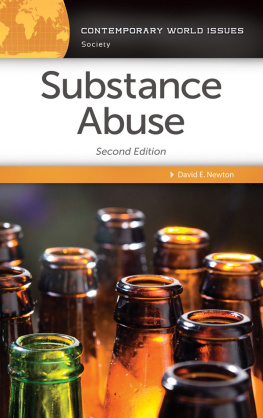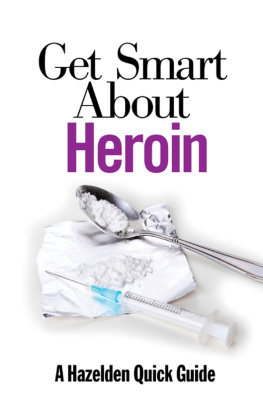Get Smart About
Prescription Painkiller Abuse
A Hazelden Quick Guide

Hazelden Publishing
Center City, Minnesota 55012
800-328-9000
hazelden.org/bookstore
2013 by Hazelden Foundation
All rights reserved. Published 2013.
No part of this publication may be reproduced in any form or by any means without the express written permission of the publisher. Failure to comply with these terms may expose you to legal action and damages for copyright infringement.
eISBN 978-1-61649-515-2
Editors notes:
The names, details, and circumstances may have been changed to protect the privacy of those mentioned in this publication.
This publication is not intended as a substitute for the advice of health care professionals.
Alcoholics Anonymous is a registered trademark of Alcoholics Anonymous World Services, Inc.
17 16 15 14 13 1 2 3 4 5 6
Cover design by Theresa Jaeger Gedig
Interior design and typesetting by BookMobile Design & Digital Publisher Services
Developmental editor: Peter Schletty
About Hazelden Quick Guides
Hazelden Quick Guides are short, accessible e-books that draw on the original work and best practices of leading experts to help readers address common addiction recovery and emotional health issues. The Get Smart collection describes each of the major drugs, its historical, cultural, and legal context, its addictive qualities, and information on prevention and treatment.
Introduction
Prescription painkillers are members of a class of drug known as opioids . Prescription opioids are the most efficient painkillers we know, and include well-known medications such as hydrocodone (Vicodin), hydromorphone (Dilaudid), and oxycodone (Percocet and the controlled-release formula, OxyContin). Not all opioids are legal drugs. For example, opium, the source drug for opioids, is not legal except for its use in manufacturing prescription drugs. And in most countries, heroin is illegal.
Our knowledge of pain and pain relief is growing. When a person is in pain, especially severe pain, the experience overwhelms all other stimuli. Pain relief becomes as essential as oxygen, and for this reason, prescription painkillers are essential to modern medicine. They are used both in surgery and in long-term pain management.
Unfortunately, prescription painkillers are easily abused and quite addictive, both physically and psychologically. This e-booklet will help you understand the nature of opioids; their history; some of the cultural and social factors surrounding their use and abuse; the nature of dependence, treatment, and prevention; and how this class of drugs impacts the brain.

Are you abusing painkillers?
These are signs that you have a problem:
- You are using other peoples prescriptions.
- You get your drugs from an illicit provider, or you are stealing them.
- You have (or had) a prescription but are no longer using the painkillers as prescribed.
- You need the drug in order to function or feel normal.
- You get the drug from multiple physicians.
- You dont tell your doctor that you have a history of addiction to alcohol or other drugs.
- You hide your use and lie about it.
- You are cited for driving under the influence.
- Friends, family, co-workers, or others have told you they are worried about your use.
- A doctor or other knowledgeable practitioner tells you to stop, and you cant.
- You think about your medication much of the time, and you worry about when you can get the next dose and how you will get more.
- You fill your prescriptions sooner than you need to and make excuses to your pharmacist or doctor.
- Your medication is causing you to abandon activities you enjoyed, even though your pain is controlled.
- You make excuses about your use, deny it, or rationalize it.
If you suspect you have been abusing a medication or are addicted, talk to your doctor immediately. Do not try to quit any medication cold turkey. If you develop withdrawal symptomswhich can feel like a severe case of the fluyou may need medical help with detoxification. If you are in recovery for another addiction, talk to your sponsor and increase your attendance at Twelve Step meetings (or other recovery program).

Opium: Historys First Wonder Drug
Most readers of this booklet were children when they first saw the film The Wizard of Oz . You may remember the scene where the Wicked Witch of the West conjured a field of poppies to put Dorothy and her fellow travelers to sleep. As a child, I always found that scene puzzling. Why would poppies put them to sleep?
The relationship between sleep and poppies would not have been a mystery to many people when that film was first released in 1939. Many viewers would readily recall a time when sleeping potions and painkillers derived from poppies were unregulated and available without prescription at drugstores. In fact, in the United States the notion of regulating medications is only about 100 years old. Government control of medication in general is tied to the history of our use of opium-derived drugs in this country.
Opium is the dried sap obtained from the opium poppy. It has been used as a medication for thousands of years. It is literally a stone-age medication whose use continues to thrive in the modern era.
Opium poppies were cultivated in the Mediterranean as early as 5000 BCE. The Ebers Papyrus is an Egyptian medical text written on papyrus fiber 3,500 years ago. It correctly describes the role of the heart as the center of the blood supply, the function of the kidneys, and even disorders such as depression and dementia. Importantly, it also describes medical uses of the poppy plant, including using the drug to treat breast abscesses and to calm babies. Poppies were widely cultivated during the times of Akhenaton and Tutankhamon, and were used to help people sleep, to calm anxious feelings, and to relieve pain. For all we know, King Tut may have used opium at some point.
The ancient applications of opium were still in use in the twentieth century. Laudanum , an alcohol and powdered opium preparation, was unregulated and used in home remedies, including sleeping potions, until the passage of the Pure Food and Drug Act of 1906. Until early in the last century, nurses actually spoon-fed laudanum to infants to quiet them down. It is astonishing to think that nurses in ancient Egypt were following the same practice!
There are several types of poppy plant, but one in particular, Papaver somniferum , is the source of opium. Until relatively recently, the extraction process had been unchanged for centuries. The process was labor intensive. The unripe seedpods, which contain a milky fluid or latex, were harvested and dried in the sun. After the pods were gathered, shallow cuts were made in them. The latex within leaked out and dried. The next day, workers returned to scrape off the dried latex. The extract could be used in liquid, solid, or powder form. This basic process is still in use today, though we now use less labor-intensive methods.
Another extraction methoddeveloped in the 1930sis called the industrial poppy straw process . In this mechanized process, the poppy straw, which includes the seedpod and stems, is harvested after the plant has matured and dried. Ripe poppy seeds are removed, and the remainder is called poppy straw. The straw is pulverized, and then chemicals are used to extract morphine (the most abundant opiate found in poppies) from it. Today, this industrial process is the source of 90 percent of the worlds supply of legal morphine.

